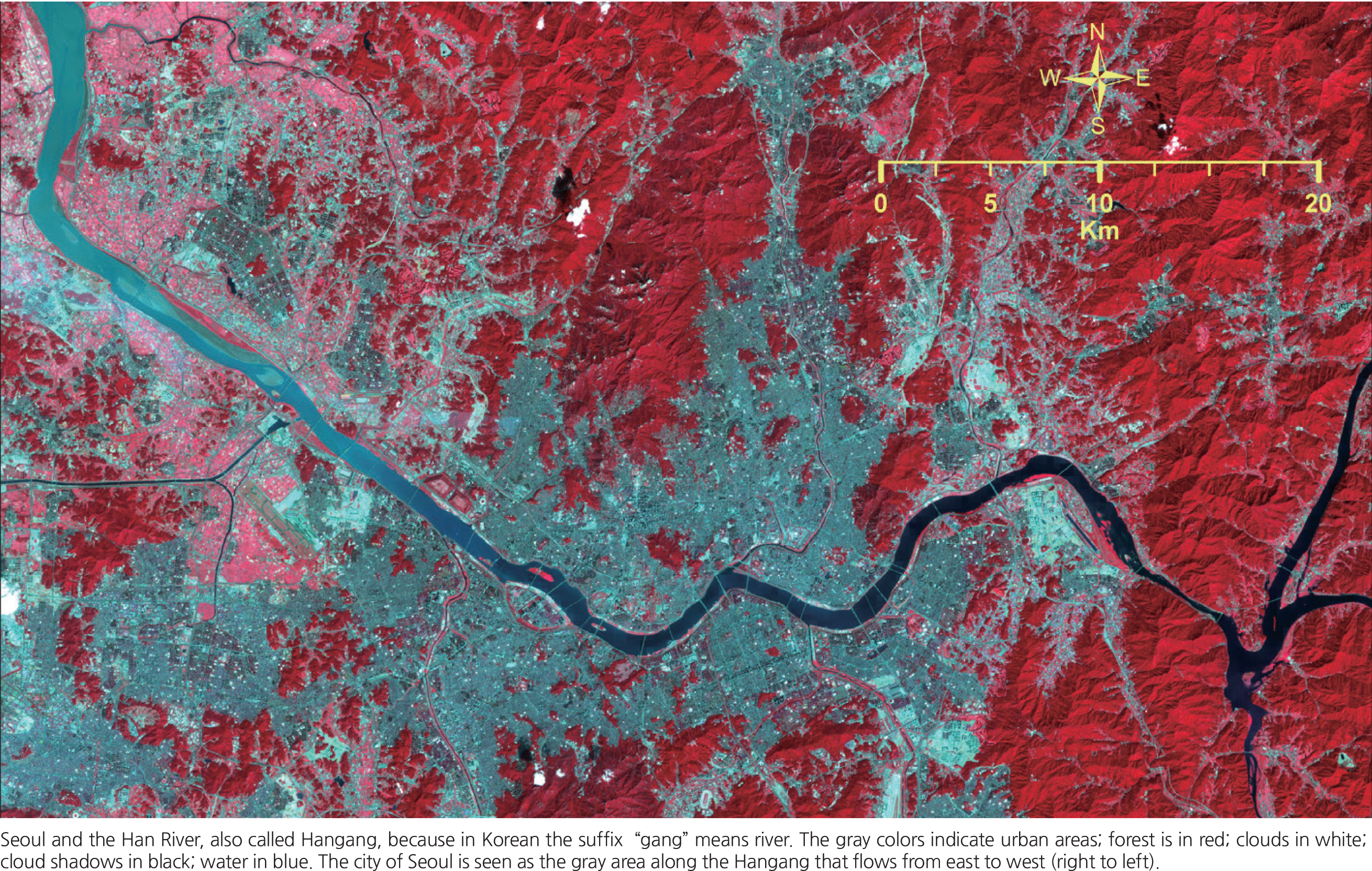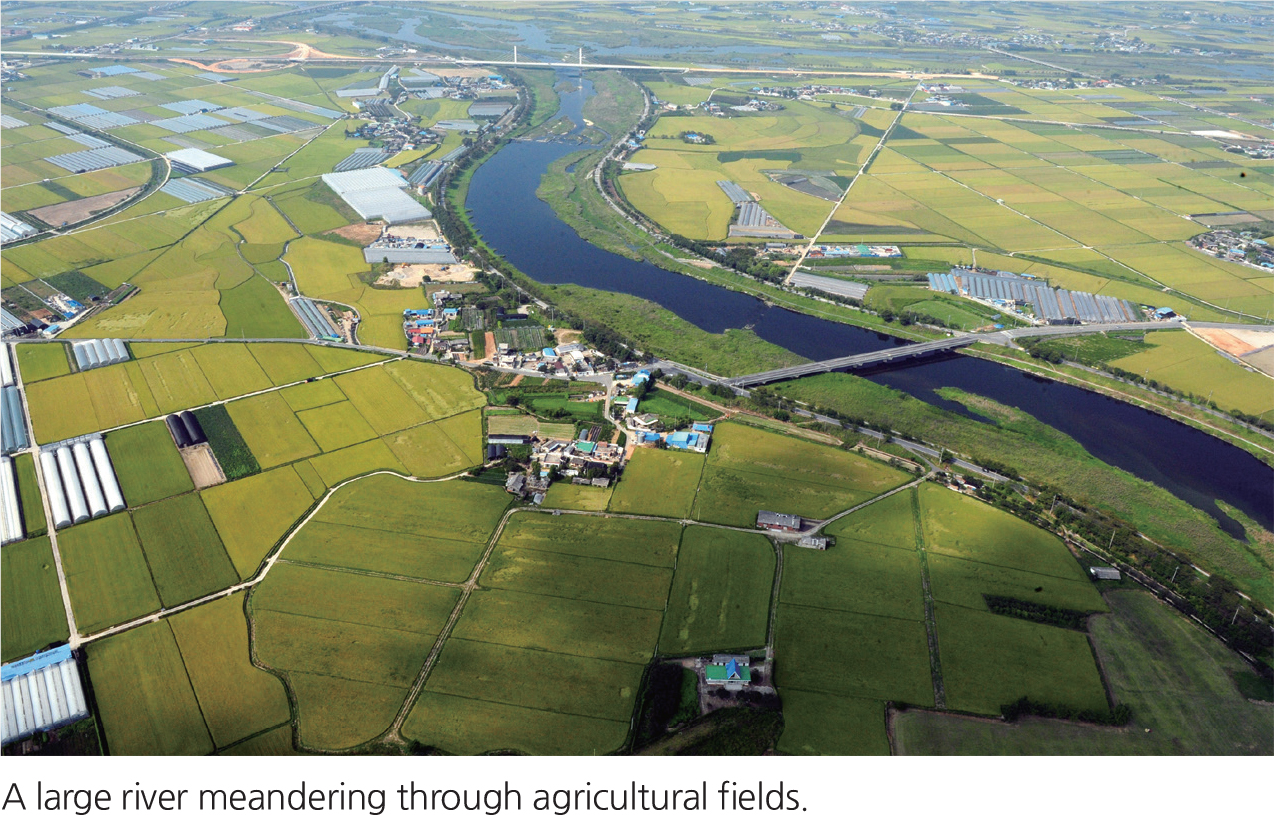The terrain of Korea is characteristically high along the east coast and low along the west coast. Consequently, most of the rivers flow into the Yellow Sea and the South Sea. The shoreline of the east coast is monotonous and rivers flowing into the East Sea are relatively short and steep-sloped. On the other hand, the shoreline of the west coast is more complex and many rivers flowing to the western and southern coasts are relatively long; they have gentle slopes and wider basins that result in higher flows. In these areas, river sediments shape extensive alluvial plains and alluvial basins, and meandering channels are often formed as well. In Korea, there are five large rivers: Hangang, Nakdonggang, Geumgang, Seomjingang, and Yeongsangang.
From 2005 to 2014, the average annual precipitation in Korea was approximately 1,323.7 mm, which is equivalent to about 1.6 times the world average. This is enough to classify Korea as a high rainfall region, although seasonal variability is extremely high. Due to seasonal rain and typhoons, 735.8 mm of rainfall (55.6% of the annual rainfall) is concentrated during the summer and often causes floods. Furthermore, rainfall has the tendency to quickly collect in the rivers as over 70% of the land is mountainous with an average slope of about 20%. These geomorphological and climatic characteristics cause high fluctuations in the flow rate of rivers throughout the year, often causing extensive floods and severe droughts.
Up until the 1950s and 1960s, most rivers in Korea were in their natural form. However, in accordance with the rapid urbanization of the 1970s, many tributaries were covered or revamped and meandering channels were straightened out in rural areas. As environmental issues gained light in the 1990s, various environmental improvement projects (such as the construction of waterfront parks and promenades) were launched in areas around rivers. In the 2000s, the concept of improvement evolved beyond the simple concept of parks to recognize the ecological and scenic conservation value of rivers for ecosystems and humans.




